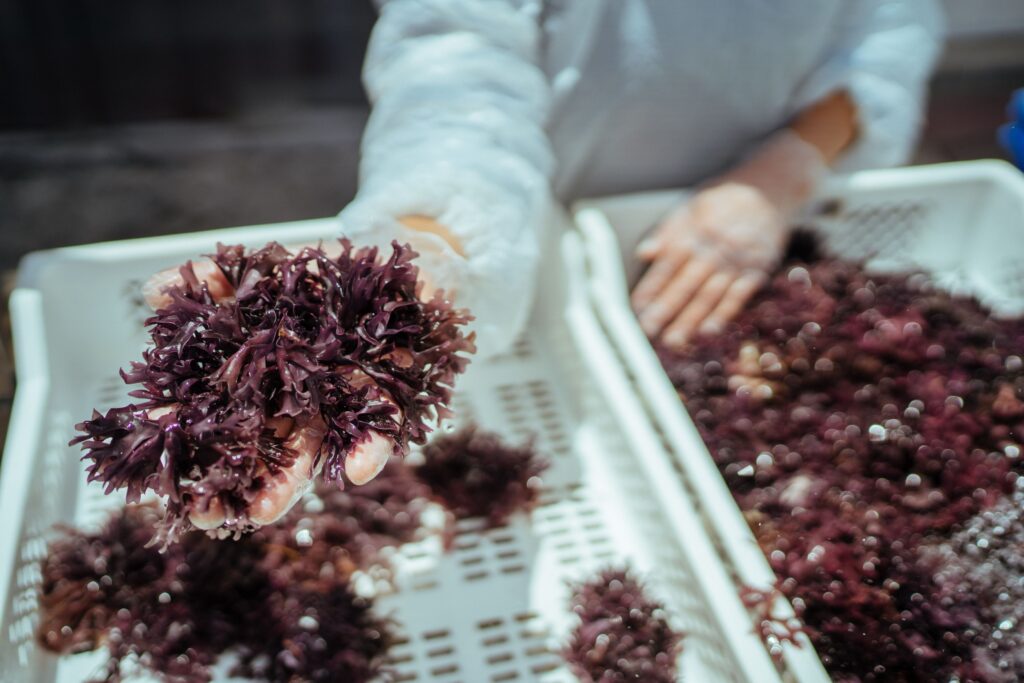At “Algas MG Ortiz”, we are dedicated to maintaining the highest standards at every part of our aquafarming process, ensuring that all of our exported products are of the best possible quality.
All of our crops are off-shore, meaning in deep water, off the coast of the Atacama and Coquimbo regions where we plant Sea String (Gracilaria Chilensis). In the case of wild harvest seaweed such as Irish Moss (Chondrus Chrispus), we work from the Tarapacá region in the north, to the O’Higgins region of central Chile. This is hand-picked by specially trained divers working in rotation areas using crop calendars to maintain healthy cultivation areas.
We are also associated with local seashore collectors, or “seaweeders”, buying what they have collected from our management areas, generating local resources and providing opportunities for the local community.
After harvesting comes the drying process, which varies depending on the type of seaweed, and its uses. Seaweed that is used for consumption goes is treated with fresh water and is then sun-dried.

1. PLANTING
With the exception of the Gracilaria, algae grow naturally on the Chilean coasts. In order to maintain the resource and make it sustainable over time, the Gracilaria is sown in aquaculture areas, manually by divers who – using dredges on the seabed – plant 4 seedling per square meter, reaching its harvest size in approximately 21 days in summer period.
2. HARVEST
The algae is harvested by divers, who comb the algae manually, avoiding damaging the resource and collecting only what is released naturally, without the need to cut the bushes. Meanwhile, the remaining bushes grow back for the next harvest.
3. SELECTION
The shore gatherers collect the algae by hand, and then select and separate them for industrial use and human consumption. Seaweed for human consumption are manually cleaned on the beach, where the epiphytes are removed and those that are more vigorous are selected.
4.DRYING
The algae for industrial use are sundried on fields, while our algae for food use are selected on the beach, where they receive a first wash with sea water and are placed in drying nets prior to be cleaned at the plant.
5.CLEANING AND WASHING
After their first wash on the beach with seawater, the algae go to our plant in Coquimbo, where they are selected by hand, epiphytes are removed and they are washed in tubs with fresh well water, maintaining a 100% natural process.
6.BLEACHING
The washed algae are sundried on drying net beds, where they naturally discolor.
